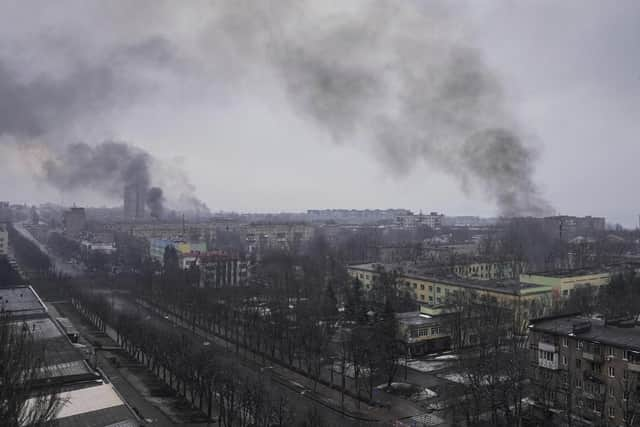Ukraine conflict: Warning Russia could use phosphorus munitions in Mariupol: What are phosphorus bombs?
The warning from the MoD in its regular morning briefing comes as fighting intensifies for the besieged Ukrainian city of Mariupol.
Such weaponry has already been used in the Donetsk region with the MoD warning that Russia risked further civilian casualties due to its “continued reliance on unguided bombs”
Advertisement
Hide AdAdvertisement
Hide AdThe warning reads: “Russian forces prior use of phosphorous munitions in the Donetsk Oblast raises the possibility of their future employment in Mariupol as fighting for the city intensifies.
"Russian shelling has continued in the Donetsk and Luhansk regions, with Ukrainian forces repulsing several assaults resulting in the destruction of Russian tanks, vehicles, and artillery equipment.
"Russia’s continued reliance on unguided bombs decreases their ability to discriminate when targeting and conducting strikes while greatly increasing the risk of further civilian casualties.”
What are Phosphorus bombs?


Phosphorus bombs behave the same way as incendiary weapons and are noted for the "severity of the injuries" they cause, according to Human Rights Watch.
White phosphorus ignites on contact with oxygen and is highly soluble in fat, meaning it grievously burns human flesh.
The use of white phosphorus is not outright banned under international weapons law – and many armed forces posses it – with it being commonly used to mark a target for an air strike.
However, under international law, the used of white phosphorus is illegal to use against civilian targets, and the use of air-dropped incendiary weapons in populated areas is prohibited.
